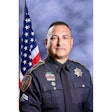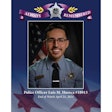As a 25-year veteran of law enforcement, I have become somewhat distressed when I read articles about officer survival that needlessly complicate the matter. Since such situations are going to occur in an environment of high stress, it is essential that tactics and techniques employed be simple to execute. Thus, survival techniques need to follow the "Simple Is Good" (SIG) principle.
Understand that your ability to respond to a life-threatening event is complicated by a diminished capability to make complex decisions and/or movements. While many tactics and techniques look great on paper or in the controlled environment of the training center, many have not worked well in the field. When looking at any new tactic or technique, you need to apply a "Three S Test" to determine if it is valid.
The Three S Test
First, is the technique or tactic simple to perform? If it cannot be mastered and performed within the time constraints of the training environment, it will certainly be forgotten in the stress of the street.
Second, does the tactic or technique make sense? If it just does not jibe with your personal and professional life experience, ask the instructor for more information. If the instructor cannot make it "click" with what you know is street reality, then your antenna should go up.
Finally, is the tactic or technique street proven? If the instructor cannot give you at least one real world example of the technique working in a high-stress environment, then be very leery of being a guinea pig.
Winning Ways
It's not unusual for us to become so enamored with a particular technique that we forget our ultimate goal, winning. And that's defined not just by survival, but exiting the incident without harm. Becoming so focused on completing overly complex techniques could result in an inability to save ourselves from harm.
Remember, most police officers do not practice their survival skills once they leave the training environment. Any repetition that they get is on the job. Walking into a gunfight and trying to execute a technique that has never been fully understood, let alone practiced, is likely to result in tragedy.
Training Doctrines
Much debate that affects individual officer survival comes from the defensive shooting arena. There are a lot of people out there trying to make a living out of firearms training, and all of them are trying to offer something unique.
As a graduate of many of these schools, I have no problem with their variety. I always go into these programs with an open mind, wanting to learn something new.
However, let's be honest, there are only so many ways to shoot a gun. The shooting technique that delivers the gun to the target quickest, with little wasted motion is probably best. Courses that insist you stand a certain way, hold the gun a certain way, use your sights, don't use your sights, and/or use a particular gun-regardless of the situation-are unlikely to pass your "Three S Test."
The goal of any survival-oriented training is to win the confrontation without harm. What technique is used to accomplish this is secondary. What is important is that it is simple and effective most of the time. Nothing is absolute.
I personally don't care if you carry a 1911 style .45; a double-action/single-action, high-capacity 9mm; or a .357 magnum revolver as long as you can hit with it, reliably, under stress. You want to use the Weaver Stance? Terrific. The Isosceles? Outstanding. I don't care as long as it is effective for you and your particular body style. Do you want to use a flash front sight picture? Excellent idea. What, you believe that point shooting is the answer? Good for you. They both have their place; maybe we need to understand both. To my way of thinking, all of the above pass the "Three S Test."
Two in the Chest?
Debate in the training arena is a good thing, unless it becomes so heated that the message to the student is lost in all the hype to show who is right. For example, everyone agrees that multiple rounds to the high chest area is the best location to shoot when trying to induce rapid incapacitation. But what if the suspect is wearing body armor? If a suspect has absorbed two or three rounds to the chest with no visual affect, it is unlikely that two or three more are going to help. The answer is an alternative aiming point.
For years I have heard the phrase, "Two in the chest, one in the head, guarantees they're really dead." Unfortunately, it has been shown over and over again that due to the mobility of the head that it is hard to hit in a fluid situation like a gunfight. Additionally, the brain is well armored by the skull, making the point of entry for any handgun round quite small. This situation led one very famous firearms instructor to remark, "Two in the chest, one in the eye, is guaranteed to run you dry."
Many informed instructors are calling for shots to the pelvis as an alternative to the head. It is felt that the pelvis is a larger target and produces an extremely painful wound. If the pelvis can be broken, movement would be seriously hindered if not stopped. Critics, however, advise that the pelvic shot does not stop ambulation, and even if it does, the downed suspects are not incapacitated as they can still shoot.
What is the answer in the interest of simplicity? I cannot give a definitive answer, but it would seem to me the best response is to shoot whatever you can. I once saw a suspect shot in the knee drop like a sack of rocks and howl in pain. I'm not saying that knee shots are the answer, but there are a lot of alternative target areas to the head and chest that can down a subject. The SIG answer here is to shoot for the center of whatever is available.
Keeping It Real
Training (or I should say improper training) can be a genuine handicap to survival, when it should be the answer. Where many firearms instructors get the ideas for some of their programs is beyond me.
For example, one agency I know of uses a drill where its officers run up to a table where they find a semi-automatic pistol in pieces. The gun must be assembled, loaded and then fired on multiple targets (which are facing them this whole time) in a given time frame.
When I was asked to do this, I ran to the table, pulled my back-up gun and solved the problem. I was told this was not "allowed" and was asked to do it again. Once the drill was restarted, I turned and ran away, zigzagging, as I went.
When I was asked why I had done this I responded "Well, zigzagging makes you harder to hit." This is not what the range officer wanted to hear. He wanted to know why I did not put the pistol together and fire. To this I responded, "If I am ever in a gunfight, with multiple suspects and my gun comes apart, I am going to use my back-up gun. If I don't have a back-up, I am going to run away, zigzagging as I go because that will make me harder to hit."
I realize the disassembled gun drill was probably fun to do, and there is nothing wrong with training being fun. But at the same time, training must be done to bring about a needed goal, which in this case is winning. Putting together a gun under fire does not pass the "Three S Test," and it does not follow the SIG principle. Does carrying a second gun pass the "Three S Test?" You bet. It's also a perfect example of following the SIG principle.
To win on the streets, you must be aware, willing, have the best equipment possible, know how to use it, seek all the training you can, know how to use that training under stress, and know what is relevant and what is B.S. You need to keep it simple, and that is the SIG principle.
Dave Spaulding is a Lieutenant with the Montgomery County Sheriff's Office in Dayton, Ohio. He is a POLICE Advisory Board member, co-author of "Defensive Living," and his latest book "Handgun Combatives" is now available.













